
We all love our feline companions and want to protect them at any cost, so we’ve put together a list of the most dangerous cat diseases that we think you should know about.
Although not all cats are at risk of developing these diseases, it’s vital that you know what they are in order to recognize the symptoms.
1. FIV – Feline Immunodeficiency Virus
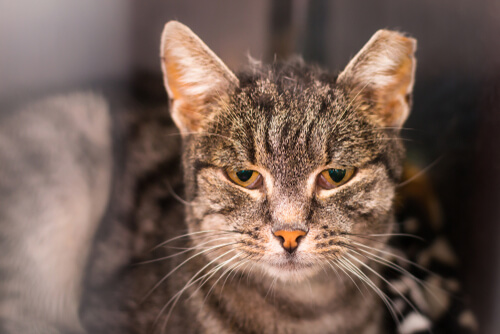
Second on our list is FIV. Often referred to as Feline Aids (specific only to cats as it doesn’t transmit to humans), FIV infects cells of the immune system and can damage your cat’s defenses.
Similar to FELV, it can cause a weakened immune system and cause certain types of cancer. It presents with similar symptoms as FELV though usually less severe and can also be diagnosed with a blood test at your vets.
There is a vaccine available in certain parts of the world which can offer some protection against FIV. Cat bites are the most common way that FIV is spread; therefore neutering your cat to prevent fighting helps to reduce the spread of FIV.
Although we don’t want our cats to develop FIV, we know now that it’s not the death sentence that it used to be and a lot of FIV positive cats can live happy, healthy lives with regular vet visits and good care.
Also Read: Feline Aids (FIV): Causes, Symptoms, & Treatment
2. FELV – Feline Leukemia Virus
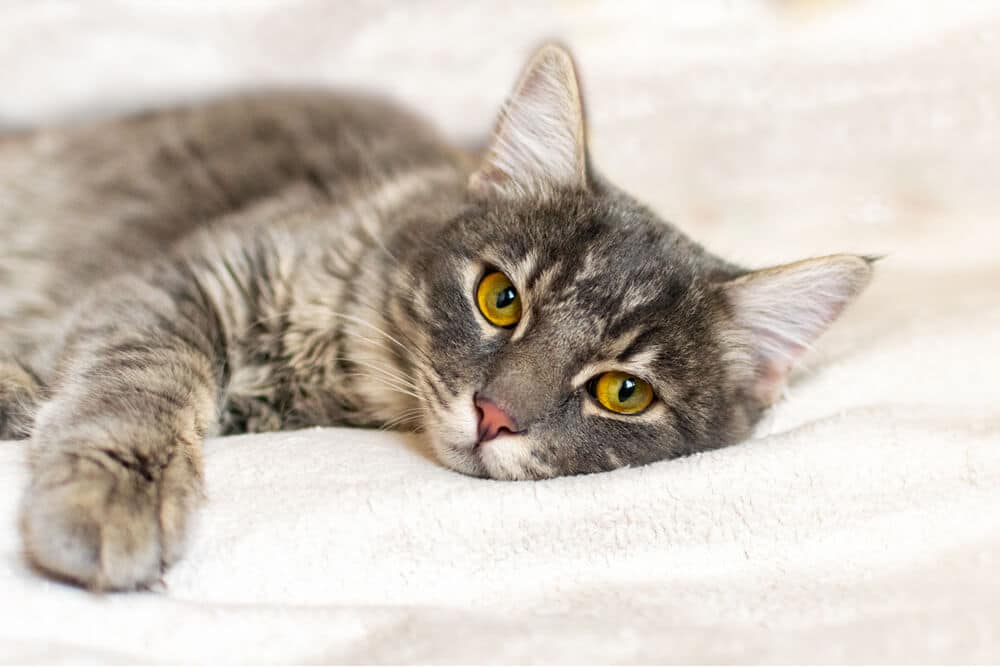
Cat Leukemia can be diagnosed easily and the great news is that there is a vaccination against FELV which offers protection and prevents FELV infection.
Feline Leukemia Virus is easily one of the most serious diseases that cats can develop worldwide. It attacks the cat’s immune system which can result in the development of cancer, anaemia and damage to the immune system.
As a result, this is often fatal disease. It’s spread through bites between cats (infected animals), close contact with an infected cat (sharing food bowls, grooming) and in the womb from an infected mother to her unborn kittens.
Symptoms can be variable but include:
- Fever
- Lethargy
- Weight loss
- Reduced appetite
- Recurrent infections
It can be diagnosed easily by a quick blood test at your vets. This should be done for any new cat in your household. However, the great news is that there is a vaccination against FELV which offers protection and prevents FELV infection.
Also Read: Feline Leukemia Vaccine: What You Need to Know
3. FIP –Feline Infectious Peritonitis
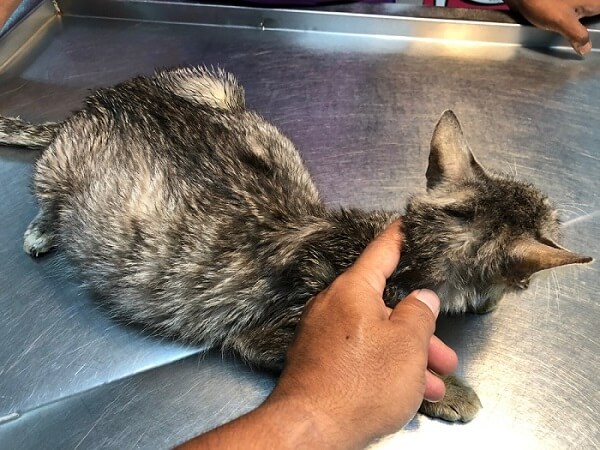
Without a doubt, this is one of the diseases that I dread to diagnose in practice because I know there isn’t much that can be done. It often occurs in young cats, particularly ones in or from a multi-cat household. It’s caused by a mutated form of coronavirus.
Don’t worry though, this is a different type of coronavirus to the one currently causing the COVID-19 pandemic worldwide and it can’t be passed onto humans from cats. However, it causes severe disease in cats and can present in a ‘wet’ or ‘dry’ form with different symptoms.
‘Wet’ form symptoms:
- Difficulty breathing (due to fluid in the chest cavity)
- Swollen distended abdomen (due to fluid in the abdomen)
- Lethargy
- Reduced appetite
- Weight loss
‘Dry’ form symptoms:
- Neurological signs
- Inflammatory conditions of the eyes
- Inflammatory conditions of the liver, kidneys, lungs and skin
- Vague symptoms (weight loss, reduced appetite, lethargy)
In conclusion, FIP is a difficult disease to diagnose and even more difficult to treat. At present, there is no cure or specific treatment for FIP and in the majority of cases it’ll be fatal.
However, there’s an anti-viral drug that has recently had promising results treating FIP and is currently undergoing testing. Hopefully, the future of cats with FIP will be more positive.
Also Read: Feline Infectious Peritonitis (FIP): Causes, Symptoms, & Treatment
4. Rabies
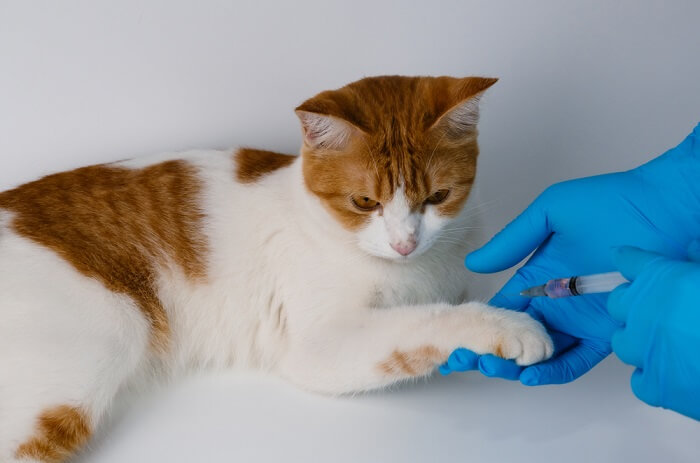
Everyone is familiar with the image of a rabid dog, but did you know that cats can get rabies too? Rabies poses a serious threat to pets and humans alike in many parts of the world.
It can cause death in approximately 7 days by attacking the nervous system and is zoonotic (can be spread from animals to humans), making it a deadly disease.
In the USA, it affects cats more than dogs. Cats can get rabies through bite wounds from other animals. They should be brought to the vet as soon as possible if they get bitten. They can get a yearly vaccine to prevent infection.
Symptoms of rabies include:
- Change in behaviour
- Aggression/excitable
- Drooling
- Loss of muscle control/comatose
Also Read: Rabies in Cats: Causes, Symptoms, & Prognosis
5. Cat Flu
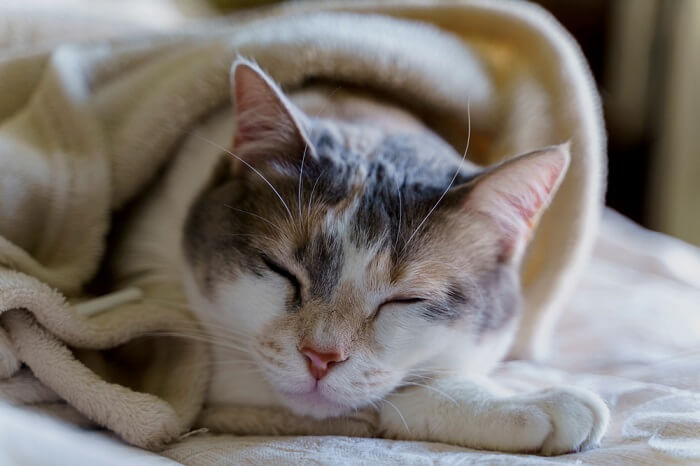
Cat flu isn’t often seen as a dangerous disease of cats as people often relate it to the type of flu that humans get, but don’t be fooled! It can present as a harmless sneeze in some cats and in others it can cause severe illness.
I’ve treated kittens that have ended up losing their eyes due to corneal ulcers as a result of cat flu. Cat flu is very contagious and spreads like wildfire between cats.
Symptoms often include:
- Nasal discharge
- Ocular discharge
- Sneezing
- Conjunctivitis
- Reduced appetite
- Fever
- Weight loss
- Lethargy
- In rare cases –limping
Luckily, a vaccine exists for cat flu which you can discuss with your vet.
Also Read: Cat Cold: Causes, Symptoms, & Treatment
6. CKD – Chronic Kidney Disease
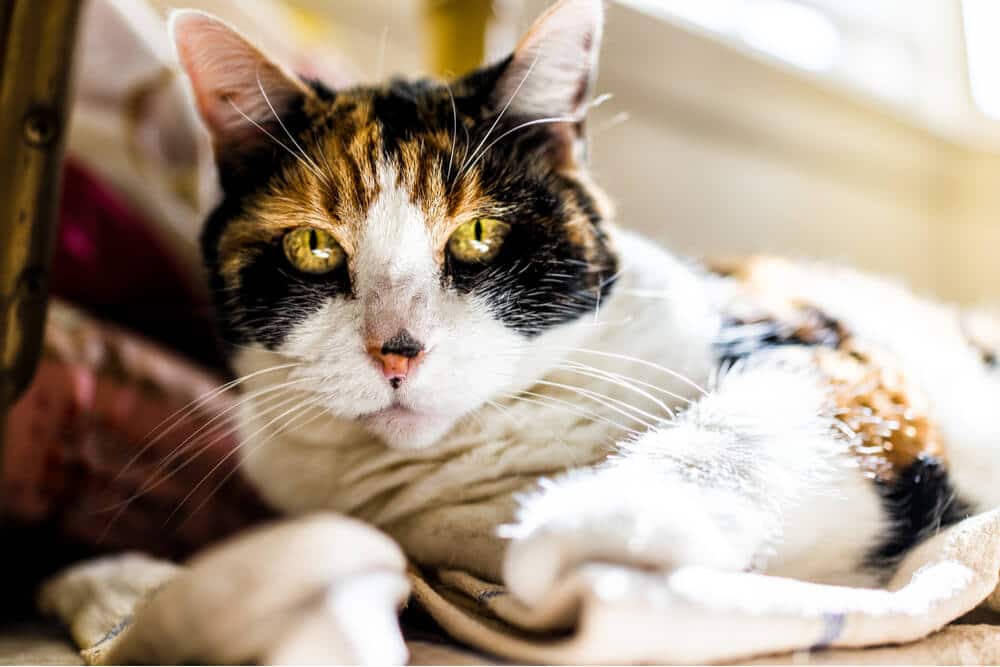
CKD is one of the most common diseases in cats, particularly as they age. It occurs from chronic, irreversible damage to the kidneys over time which can affect their function to remove waste products, produce hormones and maintain water balance.
In many cases, the cause of kidney disease is unknown. Therefore, prevention isn’t something we focus on much with this disease.
We mainly focus on recognizing the symptoms of CKD which may include:
- Increased drinking and urinating
- Vomiting
- Weight loss
- Reduced appetite
- Lethargy
- Poor unkempt coat
- Smell from breath
Though irreversible, CKD can be managed through diet, medication and regular check-ups. Knowing the symptoms can help you recognize this early on in the disease and prolong the time to potential renal failure.
Keep tabs on your cat’s kidney function with Kidney-Chek, a simple at-home saliva test. Learn more about Kidney-Chek here.
7. Diabetes
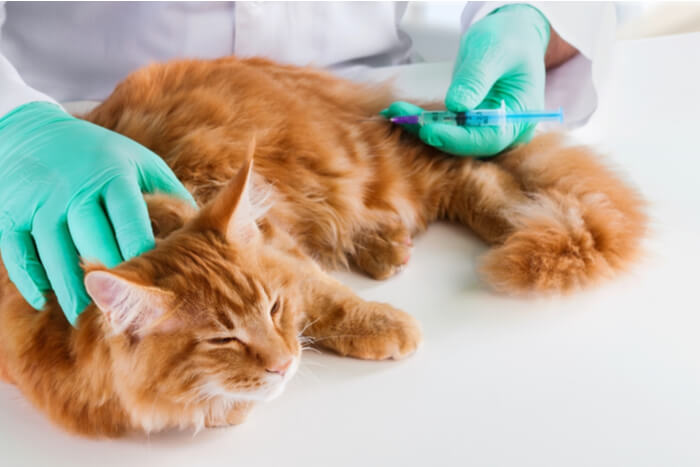
Many people are familiar with this disease in humans but are surprised to hear that it affects our feline friends too. Diabetes occurs from a reduced amount of insulin (or lack of) in the body, which results in very high sugar levels.
Unlike humans, cats almost always need insulin injections to control their diabetes. In contrast, some humans can control it with diet alone.
Signs of diabetes in cats:
- Increased drinking and urination
- Increased appetite
- Weight loss
- Poor coat condition
- Lameness on hind limbs
- Urinary tract infections
In severe diabetes (diabetic ketoacidosis) you might also notice:
- Lethargy/depression/collapse
- Vomiting
- Diarrhea
- Inappetence
Maintaining a healthy weight and diet for your cat is important to try and prevent diabetes from occurring. The outcome can vary from cat to cat and it can be very dangerous if diabetes is uncontrolled.
Also Read: Feline Diabetes: Diagnosis, Treatment, and Remission Demystified
8. Hyperthyroidism
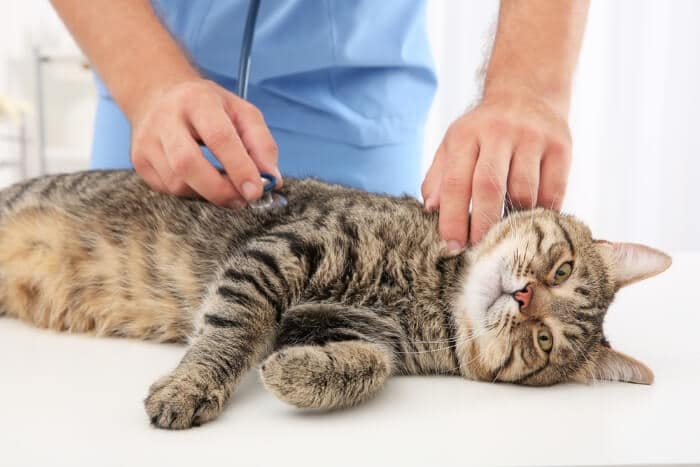
Cats can develop an overactive thyroid as they age and this can cause a variety of symptoms:
- Increased appetite
- Weight loss
- Increased drinking and urinating
- Vomiting
- Increased activity/agitated
- Increased heart rate
Untreated, it can lead to severe weight loss and even heart disease in older cats. A blood test can easily diagnose it and it can be treated with medication, surgery or radioiodine therapy.
Also Read: Hyperthyroidism in Cats, Symptoms, Treatment & Causes
9. FIA – Feline Infectious Anemia
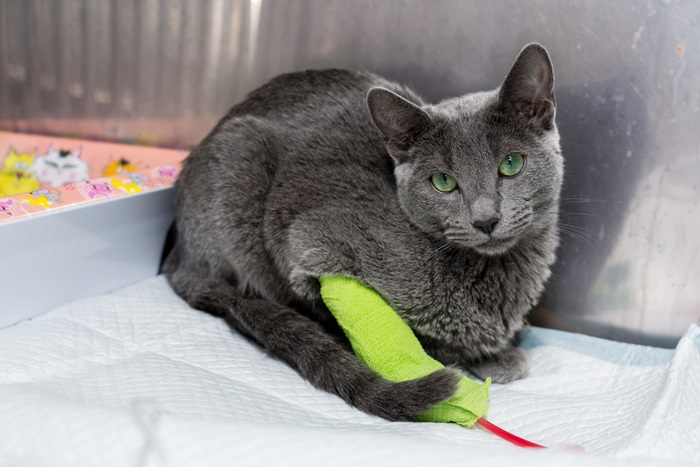
This is a severe anemia that occurs from a group of bacteria (Mycoplasmas) that attack and destroy the cat’s red blood cells.
Symptoms can include:
- Lethargy/weakness
- Pale gums
- Fast heart rate
- Rapid breathing
- Fever
Once diagnosed, medications can treat it and a blood transfusion can be given if severe anemia has occurred. It’s not fully known how these bacteria spread, but it’s thought that fleas and cat bites are involved.
Therefore, regular flea prevention and ensuring that your cat is neutered (to minimize cat fights) are vital.
Also Read: Anemia In Cats: Causes, Symptoms, & Treatment
10. FLUTD – Feline Lower Urinary Tract Disease
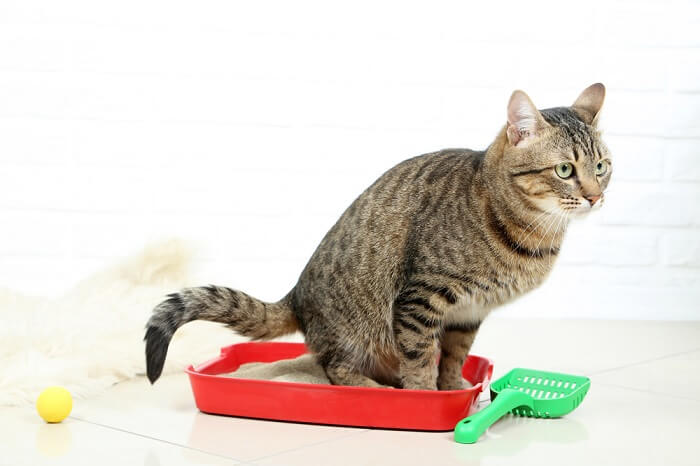
Finally, taking the last spot on my list has to be FLUTD. This is a term for a group of conditions that affect the bladder or urethra of cats. It can range from a bacterial infection, bladder or urethral stones, cancer or cystitis. The most common cause of FLUTD is cystitis.
Symptoms can include straining and pain when urinating, urinating in small amounts and blood visible in the urine. It can develop into a life threatening emergency when a cat can no longer urinate due to the above causes and becomes ‘blocked’.
We know that this is more common in male adult cats (especially indoor cats), particularly cats that are overweight and on dry food only. Prevention includes maintaining a healthy weight and balanced diet.
Also Read: Urinary Tract Infection In Cats
Take-Home Message
There are many other infectious diseases amongst our felines (e.g. feline panleukopenia, toxoplasma, ringworm, heartworm etc.) but in my opinion, these are some of the most deadly and dangerous worldwide. Taking some of the preventative tips and knowing the symptoms of these illnesses could save your cat’s life.
Frequently Asked Questions
What is the deadliest disease for cats?
Feline Leukemia Virus (FELV) is one of the deadliest diseases in cats worldwide. It attack’s the immune system of cats which can result in anaemia, immunosuppression and even cancer. It’s often fatal.
How do cats get FIV?
The most common way that cats get FIV is through a bite from another cat.
Can humans catch cat diseases?
Yes, humans can catch some cat diseases. These diseases are called zoonotic diseases; they can be spread from animals to humans. Some of the most well known ones are rabies, toxoplasma and ringworm.
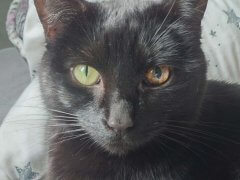
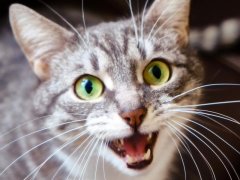
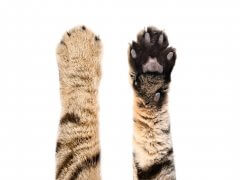


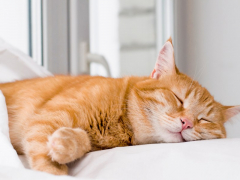

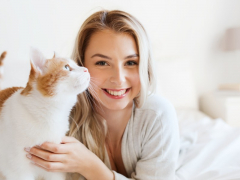
why is my cat eating and drinking a lot but not pooing help
Hi Jasmine,
If your cat is eating and drinking but not pooping, then you need to book a check up with your veterinarian as soon as possible. They could be suffering from constipation or they could have a bowel obstruction. Your vet will examine your cat and recommend treatment. Good luck with your kitty, Aisling
Get the cat lactulose from the vet , it works and also a cat fountain and use cold filtered water in it daily and clean it well
thank you they want to put her asleep she is active very happy their is np way am going to put a lively cat to sleep its muder if she was in a lot of pain she wont eat and drink and play
i just want to know what can i give her to soften her poo x
Hi Jasmine,
Increasing her level of hydration can help to soften poos, you can do this by increasing the amount of wet food (tinned) she eats and encouraging her to drink water by using lots of water bowls and a water fountain. Tinned pumpkin can also be useful.
If she’s currently constipated, laxatives will help and your vet might even need to do an enema to remove the poo if it’s really stuck. It’s important that she passes poo regularly as if it gets stuck in the colon for too long it can stretch it out causing a condition called megacolon.
This article has more information on constipation which might help;
https://cats.com/cat-constipation
Have a chat with your vet about the options available.
Hope that helps,
Aisling
I rescued a male long haired orange tabby, 12 years ago who absolutely hates the vet. We had a vet he tolerated & liked who retired. The new vet I’m now using is a cat ONLY vet which is the reason I chose them as a new vet. First visit with them, he has his teeth cleaned & needed 2 teeth pulled, he was a mess for 3-4 days afterward. I hate to take him back there. He bit the vets as they tried to sedate him for the dental cleaning. It was traumatic for him. Should I take him back there or find a new vet? What can we do to make the vet experirnce less traumatic for him?
Hmm, interesting question. Was he initially scared of his previous vet? It may simply be that he’s no longer accustomed to the person handling him now that his familiar vet has retired. The other thing to consider is that the teeth cleaning and extraction may have been scarier than previous treatments done at the vet. Finally, don’t underestimate the effect of your anxiety on him. Perhaps you liked and trusted the old vet, and he’s feeling some of your trepidation and concern with visiting a new clinic. I think managing your own stress (meditation, calming tea, reframing the experience in your mind) could have a tremendous effect on his mental state as well. Aside from that, there are a few things you can do to calm your cat in advance of a vet visit, like using calming aids like Feliway or Comfort Zone synthetic pheromones. Some calming treats also show promise (though not much).
I took my cat to the vet because he keeps chewing between both sides of his legs on the inside and has little bumps under his chin he has lost some hair on the back of his neck and vomiting on the carpet at night while I am sleeping he is a inside cat except sometimes in the morning we go outside on the patio yesterday morning when we were outside l walked away to come back to Brown throw up with a huge hairball and a piece of grass the grass I bought from chewy is organic and I thought it would be good for him.this morning l woke up and the carpet rug beside my bed he threw up was a yellow color.
It’s 3:05pm we have been up since 5:00am and he still has not been to his litter box all day he has one he pees in and one he poops in and still nothing he wants to go hide.
Oops he just went pee yeah.
I had blood work done and a urine sample done the vet said it was allergies.
They gave him a cortisone shot and a antibiotic shot this was last a week but he isn’t feeling better.
I have been very depressed and not cleaning my house with me being depressed and not cleaning my house with this cause all this to affect my cat.
He is eating and drinking his water l don’t know what else to do please 🙏 help me understand what could be wrong with my Jimbo 🐈⬛
Hello Theresa, thank you for the comment. I would advise talking to a different vet. Your current vet undermined their credibility by attributing your cat’s issues to allergies—you can’t diagnose that from bloodwork and urinalysis. The variety of symptoms you’ve described are all very different, and as a non-vet reading about your cat, I’m unable to piece together any common thread. Some of these could definitely be stress-related, and I wouldn’t be surprised if your cat is stressed by your depression and exhibiting these symptoms as a result. Talking with a new vet who knows more about cat behavior and emotional wellbeing would help a lot.
My male cat, 14 years old, has a healthy life outside Oslo, Norway. He is in the forest almost all day, aside from winter, but even then the snow or ice doesn’t worry him. He eats dry crunchy Proplan food, salmon taste, otherwise salmon fish, but never meat or chicken or pork, which can remain in his intestines too long.
For two weeks now he has occasionally been dry retching, as if something is lodged in his throat. Otherwise this doesnt seem to affect his health or activities – we both stroll in the nearby forest daily. Unfortunately he catches and eats baby squirrels and field mice.
I have taken him to an established vet – I won’t alarm anyone by mentioning the price – and they found nothing wrong, but prescribed tablets, which are very difficult to feed him. Hope that anyone can give me advice. Cheers from Norway.
Hello Ross, thanks for reaching out. What kind of tablets was he prescribed? Knowing that might help us to give a better response. I wonder if your cat has been retching more frequently lately due to hairballs associated with the warmer weather. Does he also have hairballs? It’s hard to say, especially as I’m not a vet. You may have more success posting in the Cats.com Community Forum.
Hi there, thanks for your swift reply. My cat, Simon, was prescribed Panacus vet. 187,5 mg/g, and Metacam 0,5 mg. Both things are very hard to administer, indeed near impossible. I brush Simon’s coat regularly with a steel brush, he enjoys this. Hairballs? If so, why hasn’t he coughed them up by now, with all the dry retching?
cheers, Mallory
Hi Ross, good question. I’m passing this along to one of our vets who can give you more expert insights. 🙂
Hi Ross,
It sounds like your cat enjoys a lovely life in Norway. I’m sorry to hear that he’s been unwell recently.
Did he have any blood or urine tests while at the vets? Dry retching can be caused by many things ranging from something they ate, parasites and hairballs to more serious conditions such as kidney disease, liver or issues with their gastrointestinal tract. Some cases are very mild and resolve in a few days, and others like your cat’s case can go on for a longer period and may need investigation.
As he has been dry retching for a couple of weeks and he’s 14 years old, I think blood and urine testing would be a good idea to check his organ function if he hasn’t had one already.
Mild causes of dry retching like nausea or hairballs usually resolve within a few days. Sometimes though hairballs can get a bit stuck and need additional help to ease their way through e.g. hairball paste, laxative. Do you see him bringing up hairballs? I know it may be hard to tell as he goes outside. You can buy a hairball paste or laxative from your vet.
I have a couple of questions about his symptoms in order to advise you more – does the dry retching ever result in vomiting? Is he eating normally and passing normal poo? Was your vet worried about parasites that they prescribed panacur? Do you have any videos of the dry retching?
Aisling
Thanks for the response. Simon does not seem unwell, as life goes on as normally – he following me outside, in the forest, to my garage, most places with no traffic. His dry retching continues, never with vomiting. I don’t know about his poo as he does this in the forest, and not often either, as he never eats meat or chicken, just pellets and the occasional pieces of fried salmon. washed and cooled. Regards the vet, a young woman, unfortunately with a tendency in Norway today to speak fast and near unintelligible, and not looking at self (an obvious foreigner with my surname) but at my Norwegian wife. He had blood tests at the vet, urine I don’t know as the vet took him into another room.
cheers, RossB (National Day here, marches, brass bands, flags, everyone heppy).
Hi Ross,
Thanks for the extra information.
It’s great that your cat Simon is continuing life as normal and doesn’t seem unwell.
If he’s still retching you could consider trialing a hairball paste for a few days to see if this improves the retching symptoms.
If the retching is continuing, I would be concerned as this is a new symptom for him in the last few weeks and not resolving. I would recommend to contact your vet to see what the options are.
Some options may be to investigate the retching further with x-rays and an ultrasound scan (particularly to image his stomach and intestines) and an upper airway exam (to check his throat and back of his nose).
Let us know how Simon gets on,
Aisling
My cat of 17 years has a lump on his head, it is soft to touch, he seems very lethargic
Hi Terence, sorry to hear your cat is going through that. Hope you were able to see a vet and that your cat is feeling better now.